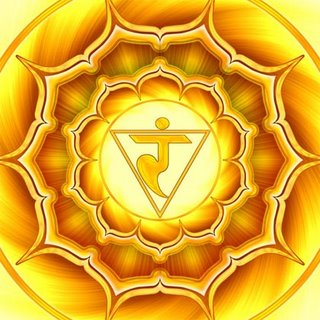The Om or Aum as it is also called, is a Sanscrit letter. Each part has a separate meaning, but when placed together, it means: When the individual spirit in man passes through the veil and rests in the transcendental he is liberated from the three states and their qualities.
Below the symbol is broken down into separate parts with each part explained;
Om/Aum Symbol
 the long lower curve represents the dream state
the long lower curve represents the dream statethe upper curve stands for the waking state
the curve issuing from the centre symbolizes deep, dreamless sleep
the crescent shape stands for "maya", the veil of illusion
and the dot for the transcendental state
This is a second version of the same symbol as above. There are many different versions with slight variations. This is, as said above, a Sanscript word, and as in any written language, variations are common in the hand-written word.

The Music of Om
Om is not a word but rather an intonation, which, like music, transcends the barriers of age, race, culture and even species. It is made up of three Sanskrit letters, aa, au and ma which, when combined together, make the sound Aum or Om. It is believed to be the basic sound of the world and to contain all other sounds. It is a mantra or prayer in itself. If repeated with the correct intonation, it can resonate throughout the body so that the sound penetrates to the centre of one's being, the atman or the soul.
There is harmony, peace and bliss in this simple but deeply philosophical sound. By vibrating the sacred syllable Om, the supreme combination of letters, if one thinks of the Ultimate Personality of Godhead and quits his body, he will certainly reach the highest state of "stateless" eternity, states the Bhagavad Gita.
The Vision of Om
Om provides a dualistic viewpoint. On one hand, it projects the mind beyond the immediate to what is abstract and inexpressible. On the other hand, it makes the absolute more tangible and comprehensive. It encompasses all potentialities and possibilities; it is everything that was, is, or can yet be. It is omnipotent and likewise remains undefined.
The Power of Om
While meditating, when we chant Om, we create within ourselves a vibration that attunes sympathy with the cosmic vibration and we start thinking universally. The momentary silence between each chant becomes palpable. Mind moves between the opposites of sound and silence until, at last, it ceases the sound. In the silence, the single thought - Om - is quenched; there is no thought. This is the state of trance, where the mind and the intellect are transcended as the individual self merges with the Infinite Self in the pious moment of realization. It is a moment when the petty worldly affairs are lost in the desire for the universal. Such is the immeasurable power of Om.
Vibration & the Om Symbol
The vibration produced by chanting Om in the physical universe corresponds to the original vibration that first arose at the time of creation. The sound of Om is also called Pranava, meaning that it sustains life and runs through Prana or breath. Om also represents the four states of the Supreme Being. The three sounds in Om (AUM) represent the waking, dream and deep sleep states and the silence which surrounds Om represents the Turiya state.
Because the first of the three states of consciousness is the waking state, it is represented by the sound "A" pronounced like "A" in accounting. Because the dream state of consciousness lies between the waking and the deep sleep states, it is represented by the letter "U" which lies between the "A" and "M". This "U" is pronounced like the "U" in would. The last state of consciousness is the deep sleep state and is represented by "M" pronounced as in "sum." This closes the pronunciation of Om just as deep sleep is the final stage of the mind at rest. Whenever Om is recited in succession there is an inevitable period of silence between two successive Oms. This silence represents the "fourth state" known as "Turiya" which is the state of perfect bliss when the individual self recognizes his identity with the supreme.
Meditation with Om
Retire to a quite place, sit down, close your eyes and completely relax your muscles and nerves. Concentrate on the space between your eyebrows and quieten and silence the conscious mind. Begin to repeat "Om" mentally while associating the ideas of infinity, eternity, immortality, etc. You must repeat Om with the feeling that you are the infinite and all-pervading. Mere repetition of Om will not bring the desired result. Keep the meaning of Om always at heart. Feal Om. Feel that you are the pure, perfect, all-knowing, eternal, free, Brahman. Feel that you are absolute consciousness and the infinite, unchanging existance. Every part of your body should powerfully vibrate with these ideas. This feeling should be kept up all day long. Practice regularly and steadily with sincerity, faith, perseverance and enthusiasm in the morning, midday and evening.







